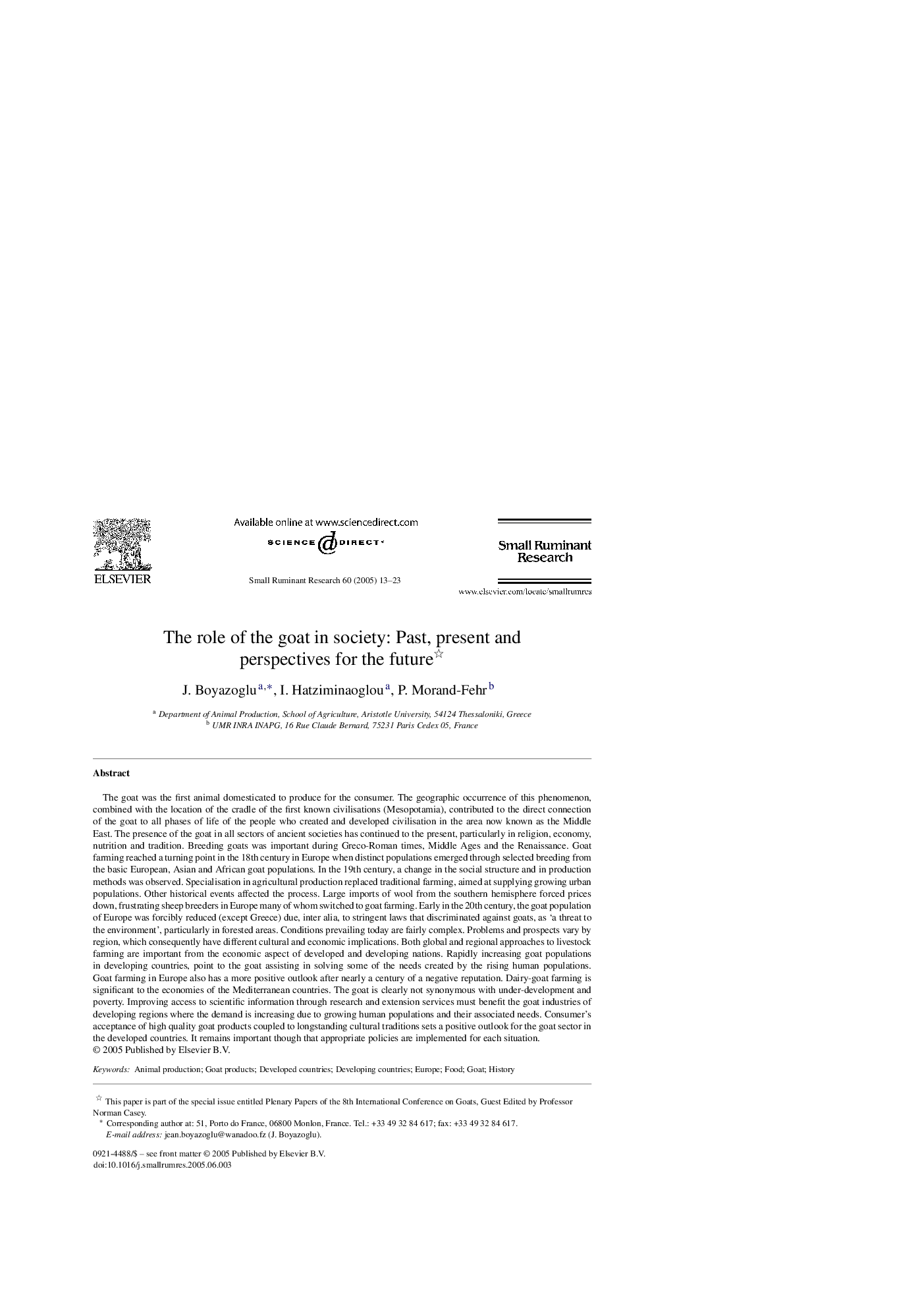| کد مقاله | کد نشریه | سال انتشار | مقاله انگلیسی | نسخه تمام متن |
|---|---|---|---|---|
| 8986726 | 1554433 | 2005 | 11 صفحه PDF | دانلود رایگان |
عنوان انگلیسی مقاله ISI
The role of the goat in society: Past, present and perspectives for the future
دانلود مقاله + سفارش ترجمه
دانلود مقاله ISI انگلیسی
رایگان برای ایرانیان
کلمات کلیدی
موضوعات مرتبط
علوم زیستی و بیوفناوری
علوم کشاورزی و بیولوژیک
علوم دامی و جانورشناسی
پیش نمایش صفحه اول مقاله

چکیده انگلیسی
The goat was the first animal domesticated to produce for the consumer. The geographic occurrence of this phenomenon, combined with the location of the cradle of the first known civilisations (Mesopotamia), contributed to the direct connection of the goat to all phases of life of the people who created and developed civilisation in the area now known as the Middle East. The presence of the goat in all sectors of ancient societies has continued to the present, particularly in religion, economy, nutrition and tradition. Breeding goats was important during Greco-Roman times, Middle Ages and the Renaissance. Goat farming reached a turning point in the 18th century in Europe when distinct populations emerged through selected breeding from the basic European, Asian and African goat populations. In the 19th century, a change in the social structure and in production methods was observed. Specialisation in agricultural production replaced traditional farming, aimed at supplying growing urban populations. Other historical events affected the process. Large imports of wool from the southern hemisphere forced prices down, frustrating sheep breeders in Europe many of whom switched to goat farming. Early in the 20th century, the goat population of Europe was forcibly reduced (except Greece) due, inter alia, to stringent laws that discriminated against goats, as 'a threat to the environment', particularly in forested areas. Conditions prevailing today are fairly complex. Problems and prospects vary by region, which consequently have different cultural and economic implications. Both global and regional approaches to livestock farming are important from the economic aspect of developed and developing nations. Rapidly increasing goat populations in developing countries, point to the goat assisting in solving some of the needs created by the rising human populations. Goat farming in Europe also has a more positive outlook after nearly a century of a negative reputation. Dairy-goat farming is significant to the economies of the Mediterranean countries. The goat is clearly not synonymous with under-development and poverty. Improving access to scientific information through research and extension services must benefit the goat industries of developing regions where the demand is increasing due to growing human populations and their associated needs. Consumer's acceptance of high quality goat products coupled to longstanding cultural traditions sets a positive outlook for the goat sector in the developed countries. It remains important though that appropriate policies are implemented for each situation.
ناشر
Database: Elsevier - ScienceDirect (ساینس دایرکت)
Journal: Small Ruminant Research - Volume 60, Issues 1â2, October 2005, Pages 13-23
Journal: Small Ruminant Research - Volume 60, Issues 1â2, October 2005, Pages 13-23
نویسندگان
J. Boyazoglu, I. Hatziminaoglou, P. Morand-Fehr,